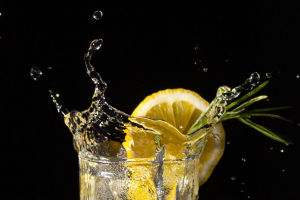Dalgona
A campaign about homemade coffee has become popular in South Korea, which is Dalgona, also known as "400th Coffee".
Why is it called 400 times? It is said that in the production process, it needs to be stirred 400 times by hand before it can take shape.
It is believed that the main reason for their popularity is that they can be easily achieved at home, does not need any foundation, and have a high degree of topic and participation on the Internet.
Dalgona coffee requires only three ingredients (instant coffee, sugar and hot water) to be fully mixed until the foam becomes fluffy and inflatable. It is reported that the drink began to be popular in the United States in mid-March and then quickly became popular all over the world.
Why do you only need three materials to make it? What are the functions of each of these three materials? Firstly, instant coffee powder is made from brewed coffee through a process of concentration and dehydration. When drinking, just add hot water to make the coffee.
However, it cannot be completely dissolved in water, and the mixture forms a stable colloid, also known as a colloidal dispersion, which is a uniform mixture. The colloid contains two kinds of substances: the dispersed substance, which is called the "dispersed phase" (fine coffee solid particles), and the other a continuously distributed substance called the "dispersed medium" (water).
When stirring, a large amount of air is introduced into the mixture to form bubbles. Generally, small bubbles combine to form air bubbles and then burst. However, very fine coffee particles can be adsorbed on the surface of the bubble, surrounding and trapping the bubble, and blocking the combination of the surrounding bubbles.
As a result, a large number of small bubbles are retained to form cloud-like coffee bubbles. This phenomenon is called Pickering stabilization. Cloud-like coffee bubbles are also a type of colloid, but they contain air (dispersed substances) and water (continuously distributed substances). The purpose of adding sugar is to increase the viscosity of the mixture and help stabilize the foam.
Only instant coffee powder has this effect; ordinary brewed coffee (espresso or hand-brewed), three-in-one coffee, matcha powder, and chocolate powder cannot be bubbled because they cannot form colloids containing solid particles when mixed with water.
Ordinary brewed coffee contains fewer coffee particles, or the particle size changes greatly, so it is difficult to effectively intercept bubbles compared to instant coffee powder.
Although the material is relatively simple, the production process takes time.
1. Prepare instant coffee powder, sugar, hot water (1:1:1 ratio), and milk 250ML.
2. The proportion of instant coffee powder, sugar and hot water must be 1:1:1. If there is too much water, it will not work.
3. Be sure to use instant coffee powder. Do not beat until foaming if it contains sugar, cream or espresso.
4. Prepare a large bowl and add instant coffee powder, sugar and hot water.
5. Beat with a spoon until the caramel colour and milk foam appear on small hooks.
6. Add 3-stroke 4 milk to the glass (ice can be added so that the foam can float on top).
So the homemade coffee is finished.


